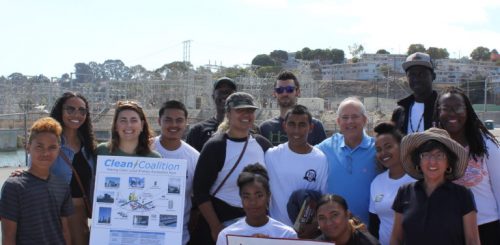
A model for clean community power
The Hunters Point Project will prove that clean local energy can reliably meet at least 25% of the community’s total electric energy needs.
In collaboration with Pacific Gas & Electric (PG&E) and in support of the city of San Francisco’s goal to achieve a 100% renewable electricity supply, the Clean Coalition is bringing a groundbreaking project to life in San Francisco.
TheHunters Point Project, named after the substation that serves the Bayview and Hunters Point areas of San Francisco, will prove that clean local energy can reliably meet at least 25% of the community’s total electric energy needs. This Project, sited in a historically disadvantaged area, will help PG&E meet its SB 43 mandate to bring clean local energy online in communities.
Policymakers and utility executives demand empirical evidence that proves large penetrations of clean local energy can result in a reliable grid. As part of the Project, the Clean Coalition is modeling the entire Hunters Point substation area – which covers approximately 20,000 residences and businesses – to determine the optimal locations to build 50 MW of new, local renewable capacity. To develop this model, the Clean Coalition is first identifying the most valuable locations in a community to deploy large amounts of clean energy. Then, using sophisticated software tools and techniques, the organization will model the power flow on the local grid – starting with baseline power and then accounting for substantial generation from local renewable assets.


